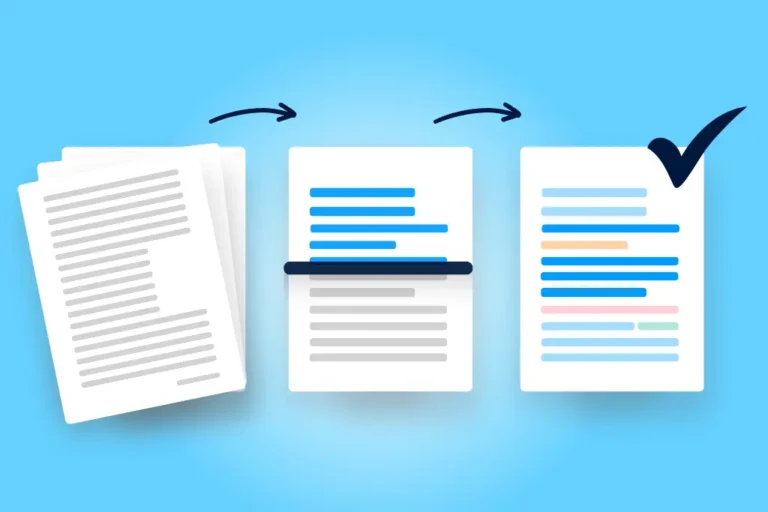A large part of the work of in-house lawyers is and remains the management of contracts. Fortunately, there are efficient digital tools to help with this time-consuming task. They not only save time, but also offer more accuracy and improved data protection.
You know how important clauses are within your contracts. The objective is always the same: To set out clauses clearly and eliminate ambiguity. Even though there are many ways to draft clauses, there are elements that are used frequently. It therefore makes sense to create a central library of such clauses. It offers “building blocks” that make contract drafting easier even for non-lawyers and is therefore doubly useful for legal departments.
In this article, we will show you what you need to bear in mind when creating a clause library and what advantages it offers.
How to set up the ideal clause library?
For maximum efficiency, the clause library must firstly be set up correctly and secondly kept up to date. Here are the steps for an efficient clause library.
Centralization and classification
There are clauses in every contract. Each one has been created with care. If this work needs to be done again each time, it costs your legal department a lot of time. Of course, clauses can relate to many different aspects of a contract, but there are several categories, such as confidentiality, liability, or intellectual property. For each of these categories, model clauses can be created that fulfill the respective legal conditions. Classification is also necessary to simplify the search and make the library as user-friendly as possible.
With a powerful CLM solution, creating a clause library is easy. For example, clauses can be uploaded directly from existing contracts into the library.
Harmonization and collaboration
A central point of contact for clauses also makes it easier to harmonize them. Formulations can be compared and adapted, minimizing the risk of ambiguities or ambivalent interpretations. And if a legal text or regulation changes, this can be quickly adjusted and harmonized in all affected clauses.
The collaborative approach is very important for an efficient and useful clause library. The clause library is of course primarily used by the legal department, but all contracts benefit from the library, which helps speed up the contract creation process. In addition, even non-lawyers can use certain approved clauses, such as alternative clauses, in negotiations. To ensure that the clause library covers all relevant categories and best meets the needs of non-lawyers, it’s important to involve all stakeholders from the outset. Which clauses are needed? Which categorization makes the most sense? How do we formulate the clause? Collaboration with this group of “end users” increases the benefits and efficiency immensely and creates engagement among non-lawyers.
An efficient tool simplifies this stage of library creation as well: the clauses can be edited, commented on, and linked to contract templates.
Concrete benefits of a clause library
A well-structured clause library offers numerous advantages, particularly in terms of compliance, and improves collaboration not only within the legal department, but also with all affected teams and stakeholders. What does this look like in practice?
Compliance and legal certainty
Let’s assume a new regulation comes into force that must be considered in your contracts. Certain clauses are affected. Manually adapting all contract templates would not only take a lot of time. There would also be a risk of overlooking clauses and thus jeopardizing compliance.
With a clause library, the affected clause templates can be easily identified. The risk of forgetting individual clauses is minimized and the compliance of your contracts is guaranteed. All contract templates that contain the updated clauses are also updated automatically. This ensures that all parties involved always find and use the latest contract templates.
Legal certainty is also promoted by the clause library. The collaborative drafting of the clauses enables all possible legal requirements to be considered. The harmonization of format and wording leaves no room for divergent interpretations.
Overall, the clause library offers maximum precision and thus strengthens compliance and security.
This could also interest you: How to Know if it’s Time for a Compliance Check-Up
Collaborative knowledge management and time savings
The legal department works hand in hand with all stakeholders and affected departments right from the creation of the clause library. In this way, knowledge is managed collaboratively. Everyone’s ideas are collected and categorized using tags. Comments are incorporated to further improve the clauses before they are shared with other teams and made available to contract creators or linked to contracts. This collaboration is a clear plus and optimizes knowledge management across the company.
And it pays off: Beyond the legal team, other departments can also access the clause library. With powerful CLM software, the clauses are one of the building blocks that make contract creation possible even for non-lawyers. This increased autonomy saves time and reduces the workload of the legal department.
Optimize your contract management!
As you can see, a well-structured clause library creates a real win-win situation that you should definitely take advantage of.
To create an efficient clause library, you require the right CLM tool. Ensure your software has the necessary features to facilitate easy creation, maintenance, and use.
Want to learn more about clause libraries and optimized contract management? Contact us for a personalized demo!


